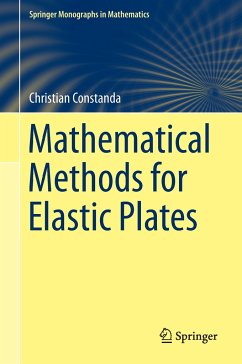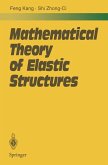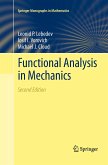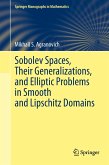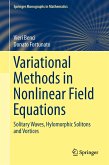Mathematical models of deformation of elastic plates are used by applied mathematicians and engineers in connection with a wide range of practical applications, from microchip production to the construction of skyscrapers and aircraft. This book employs two important analytic techniques to solve the fundamental boundary value problems for the theory of plates with transverse shear deformation, which offers a more complete picture of the physical process of bending than Kirchhoff's classical one.
The first method transfers the ellipticity of the governing system to the boundary, leading to singular integral equations on the contour of the domain. These equations, established on the basis of the properties of suitable layer potentials, are then solved in spaces of smooth (Hölder continuous and Hölder continuously differentiable) functions.
The second technique rewrites the differential system in terms of complex variables and fully integrates it, expressing the solution as a combination of complex analytic potentials.
The last chapter develops a generalized Fourier series method closely connected with the structure of the system, which can be used to compute approximate solutions. The numerical results generated as an illustration for the interior Dirichlet problem are accompanied by remarks regarding the efficiency and accuracy of the procedure.
The presentation of the material is detailed and self-contained, making Mathematical Methods for Elastic Plates accessible to researchers and graduate students with a basic knowledge of advanced calculus.
The first method transfers the ellipticity of the governing system to the boundary, leading to singular integral equations on the contour of the domain. These equations, established on the basis of the properties of suitable layer potentials, are then solved in spaces of smooth (Hölder continuous and Hölder continuously differentiable) functions.
The second technique rewrites the differential system in terms of complex variables and fully integrates it, expressing the solution as a combination of complex analytic potentials.
The last chapter develops a generalized Fourier series method closely connected with the structure of the system, which can be used to compute approximate solutions. The numerical results generated as an illustration for the interior Dirichlet problem are accompanied by remarks regarding the efficiency and accuracy of the procedure.
The presentation of the material is detailed and self-contained, making Mathematical Methods for Elastic Plates accessible to researchers and graduate students with a basic knowledge of advanced calculus.
From the book reviews:
"This is a nice short and self-contained book on mathematical methods in the linear theory of plates. ... The book is strongly recommended to those who are interested in mathematical problems of elasticity and applications of the theory of potentials in mathematical physics." (Leonid P. Lebedev, zbMATH, Vol. 1301, 2015)
"This is a nice short and self-contained book on mathematical methods in the linear theory of plates. ... The book is strongly recommended to those who are interested in mathematical problems of elasticity and applications of the theory of potentials in mathematical physics." (Leonid P. Lebedev, zbMATH, Vol. 1301, 2015)

